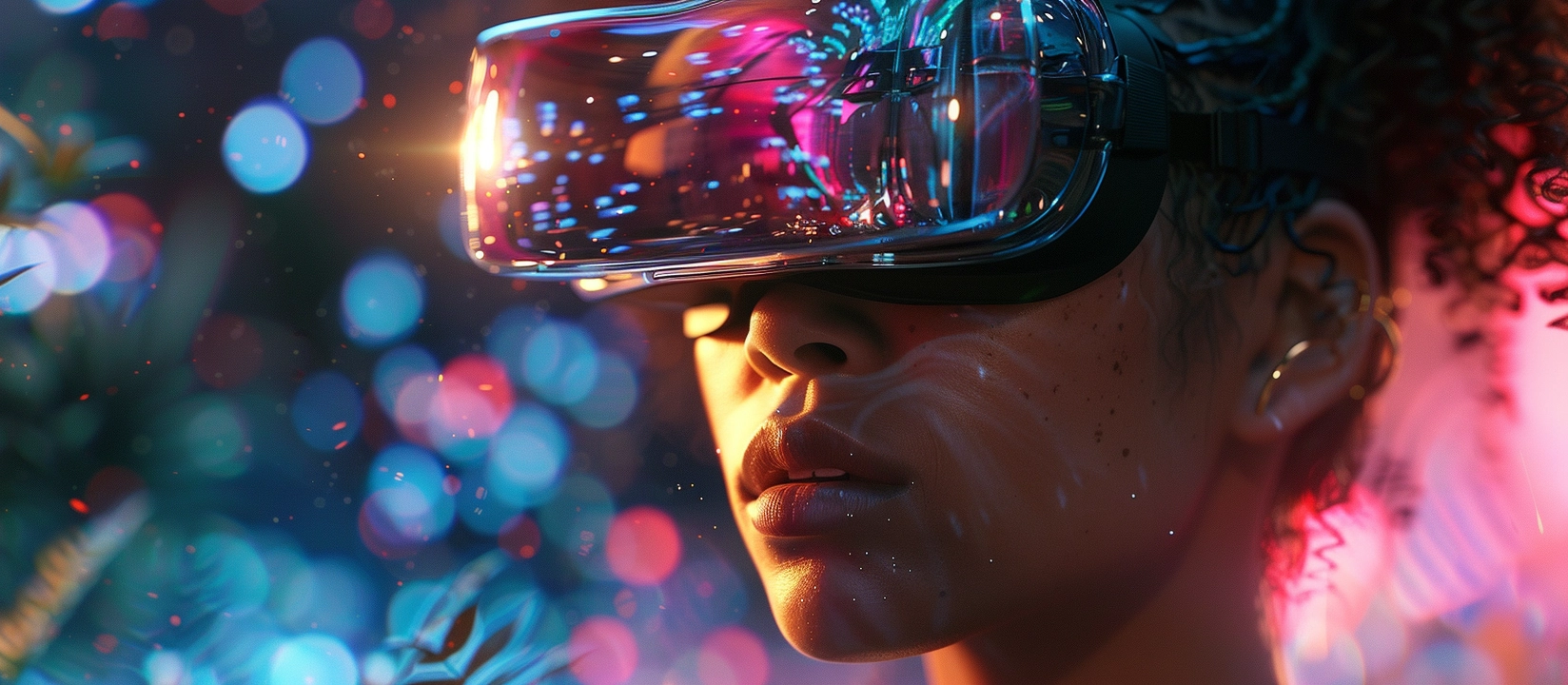Have you ever wondered if the world inside your mind could become as real as the one outside? Reality shifting claims just that—to move your consciousness to a different universe.
Our blog post dives into this fascinating concept, separating truths from tall tales, and guiding you through what science says about these extraordinary experiences. Discover the reality of shifting with us!
Table of Contents
Understanding Reality Shifting

Reality shifting is the practice of mentally transporting oneself to an alternate reality, often referred to as a desired reality. It is not the same as lucid dreaming or astral projection, as it involves a conscious and intentional shift in one’s perception of reality.
What is Reality Shifting?
Shifting lets a person’s mind travel to another reality. Many say it’s like stepping into a different world where anything is possible. Fans of Harry Potter might try to shift into Hogwarts, while others imagine new places.
It feels incredibly real and can be more intense than any dream you’ve had.
People use methods like meditation, visualisation, and self-hypnosis to start shifting. They focus their thoughts deeply on the place they want to go. This takes practice, but some can do it very well.
It’s a way for people to explore other realities with their minds while still here in this one.
Is Reality Shifting the Same as Lucid Dreaming?
Reality shifting is not the same as lucid dreaming. When you shift realities, you stay in this world and dream about being somewhere else. Your mind creates a new place where you can do anything.

This new dimension feels very real. You might be at Hogwarts or with your favorite book characters.
Lucid dreaming is different because you know you are dreaming and take charge of the dream. It’s like being the director of your own movie that happens while you sleep. You decide what to see, where to go, and what to do in the dream world.
The Differences Between Reality Shifting and Astral Projection
Reality shifting dives into the idea of moving your consciousness to another dimension. You are still in charge and aware, just like when you dream vividly and know you can control it.
In reality shifting, folks focus on detailed scenarios they want to explore or live out. It’s a bit like stepping into a new world where the rules might be different.
Astral projection is more about your spirit taking a trip outside your body. People say there’s a sort of ‘astral body’ that floats away while their physical form stays put. This experience often connects with spiritual beliefs and practices.
Unlike reality shifting, astral projection involves navigating what many call the ‘astral plane,’ an existence believed to overlay our own tangible world.
Differences between Reality Shifting, Lucid Dreaming, and Astral Projection

Reality shifting involves consciously entering a desired reality, while lucid dreaming is being aware that you are in a dream and being able to control it. Astral projection, on the other hand, is the belief that one’s consciousness can leave their physical body and travel to different planes of existence.
Each phenomenon offers unique experiences and possibilities for exploration of the mind.
Reality Shifting vs. Lucid Dreaming
Reality shifting involves consciously moving your consciousness to a different reality – it’s like stepping into an alternate universe. On the other hand, lucid dreaming is about being aware that you’re in a dream and having some level of control over it.
While reality shifting deals with permanently entering a new reality, lucid dreaming allows you to manipulate and shape your dream experience while still asleep.
In essence, reality shifting is akin to physically relocating your awareness to another dimension or existence..while lucid dreaming empowers you to take charge within the confines of your dreamscape.
Reality Shifting vs. Astral Projection
Transitioning from comparing reality shifting with lucid dreaming, let’s now delve into distinguishing between reality shifting and astral projection. While reality shifting involves experiencing alternate realities while fully conscious, astral projection refers to the separation of one’s consciousness from their physical body to explore other dimensions or realms.
Unlike lucid dreaming, both reality shifting and astral projection are based on the belief in accessing different planes of existence, but they differ in the level of consciousness and control experienced during the process.
In contrast to lucid dreaming where awareness is limited to within a dream, astral projection allows for an out-of-body experience with perceived travel outside one’s immediate environment.
The Science Behind Reality Shifting
The science behind reality shifting involves exploring the psychological and cognitive aspects of this phenomenon, as well as examining any potential scientific evidence supporting it.
This section will delve into the fascinating world of reality shifting from a scientific perspective.
Is There Any Scientific Evidence Supporting Reality Shifting?
While reality shifting has piqued interest, there is currently a lack of scientific evidence to support its validity. This psychological phenomenon remains speculative without concrete empirical backing, contributing to the ongoing debate and uncertainty surrounding its nature.
Experts continue to explore this concept, but as of now, it remains an uncharted territory in scientific research.
Some experts speculate about the nature of reality shifting, but there is no consensus or concrete scientific evidence supporting its existence. As such, while it continues to capture attention and curiosity, it’s crucial to approach the topic with a critical mindset and an understanding that factual grounding is yet to be established through scientific investigation.
Psychological Features of Reality Shifting
Reality shifting involves various psychological aspects that make it a complex mental activity. It taps into suggestibility, absorption, and fantasy-prone personalities of individuals.
Those engaging in reality shifting may experience dissociation and depersonalization as they immerse themselves in an alternate reality. This phenomenon has implications for stress management, emotion regulation, coping strategies, and even identity exploration.
The process of reality shifting can become an addictive coping mechanism for some and serve as a form of meditative mentation for others.
There are broader concerns related to mental well-being and psychiatric implications associated with prolonged engagement in reality shifting activities. People experiencing loneliness or seeking an escape from their daily lives might find comfort in these practices; however, there is potential for disassociation or psychopathological experiences among individuals engaged in this trend.
The Process of Reality Shifting
Reality shifting involves various induction methods such as the “raven method” and “Alice in Wonderland method.” These methods are designed to help individuals enter a meditative state, where they can visualize and immerse themselves in their desired reality.
Common Induction Methods
Induction methods play a critical role in facilitating reality shifting experiences. The following are some of the most commonly used induction methods:
- The Raven Method: A popular technique involving visualization and scripting to create a desired reality.
- The Alice in Wonderland Method: This method involves creating a detailed script while imagining oneself falling down the rabbit hole, leading to the desired reality.
- The Pillow Method: In this technique, individuals place a physical object or representation of their desired reality under their pillow to aid in shifting during sleep.
- The Doorway Technique: By visualizing walking through a door and entering the desired reality, individuals aim to shift successfully.
- Reality Shift Scripting: Writing out detailed scripts or stories about the desired reality to immerse oneself mentally and emotionally in that world.
- Meditation and Visualization: Utilizing deep meditation and visualizing the desired reality with focused attention and intention.
Phenomenological Aspects of the Shifting Experience
Reality shifting encompasses a profound shift to an alternative reality, complete with distinct emotions, memories, and sensations. The experience of this phenomenon is facilitated through specific induction methods involving relaxation and concentrated attention.
Researchers can harness phenomenology to gain insights into the individual’s reality-shifting experiences, delving deep into the nature and meaning of this intriguing phenomenon. This qualitative approach provides a flexible tool for in-depth exploration of reality shifting experiences, shedding light on its unique aspects and enhancing our understanding.
Shifting enthusiasts delve deeply into alternate realities that bring about feelings, emotions, and sensory perceptions distinct from their everyday existence. Understanding these experiences involves immersing oneself in varied states of consciousness and exploring mental landscapes beyond conventional perceptions.
Popular Desired Realities in Shifting
Many individuals who practice reality shifting express a desire to experience popular fictional or fantasy environments, such as the world of Harry Potter or other well-known themes.
These desired realities can vary widely and are often based on personal preferences and emotional connections to specific stories or settings.
Harry Potter Environments
Harry Potter environments are incredibly popular among reality shifting practitioners, drawing inspiration from the magical world of Hogwarts and its enchanting elements. Many individuals actively seek to immerse themselves in this desired reality, using techniques to transport their consciousness into the realm of Harry Potter.
This trend has surged on platforms like TikTok, with users sharing their experiences and strategies for achieving the ultimate shift into the captivating and mystical universe of the Harry Potter series.
The allure of experiencing the wizarding world firsthand has captivated a significant portion of those interested in shifting and manifesting, making it one of the most sought-after realities within this practice.
Other Popular Themes
Transitioning from the enchanting world of Harry Potter, reality shifting enthusiasts are drawn to a diverse array of alternate realities. From futuristic utopias to medieval kingdoms, desired realities span an extensive spectrum of themes and genres.
Once can step into bustling metropolises filled with advanced technology or immerse oneself in idyllic natural landscapes replete with magical creatures, each offering unique experiences for the curious mind.
The allure of these varied realms lies in their ability to serve as an escape from everyday life, allowing individuals to explore new possibilities and experiences beyond the confines of ordinary existence.
Is Reality Shifting Real or Imagined?
Many people have differing opinions on the legitimacy of reality shifting, with some dismissing it as purely imagination and others believing in its potential. Separating fact from fiction is essential to understanding this phenomenon.
Separating Fact from Fiction
Reality shifting is a real phenomenon with multiple pieces of evidence supporting its existence. Some believe it violates known laws of science, but there are recurrently expressed beliefs about reality shifting, such as it being a fad and dangerous.
It has also been compared to related phenomena like hypnosis and tulpamancy, prompting differing opinions on its legitimacy due to the theory involving transferring one’s soul to an ideal reality where fictional characters are real.
Differing Opinions on the Legitimacy of Reality Shifting
Opinions on reality shifting’s legitimacy vary widely. Some skeptics question its validity, highlighting the lack of scientific evidence and potential for misinformation. On the other hand, many proponents firmly believe in its reality based on personal experiences and anecdotal evidence, emphasizing its life-altering impact.
This divergence sparks debates within the community and beyond, contributing to the complex landscape of understanding this phenomenon.
While some are skeptical about reality shifting due to the absence of scientific backing and pressure within the community to unquestioningly accept its validity, others maintain firm belief in it based on their own experiences and the profound impact it has had on their lives.
Related Phenomena to Reality Shifting
Tulpamancy, hypnosis, absorption, dissociation, and fantasy proneness are all related phenomena to reality shifting that offer interesting insights into altered states of consciousness and the human mind.
Understanding these phenomena can provide a more comprehensive perspective on the potential mechanisms behind reality shifting experiences.
Tulpamancy
Tulpamancy, closely associated with reality shifting, is deeply embedded in online daydreaming culture. This concept revolves around the belief that a tulpa, an entity created through focused thought and visualization, can become real or somewhat-real to the creator.
It’s entwined with social media trends and psychological profiles as it explores the intersection of online culture and personal beliefs.
Practitioners compare tulpamancy to related phenomena like hypnosis and dissociation while harnessing aspects of fantasy-prone personality traits. The concept’s sway over individuals within social platforms reveals its influence on visual imagery and paranormal beliefs.
As we delve deeper into this emerging trend, its connection to reality shifting surfaces more profoundly.
Hypnosis
Hypnosis can produce vivid mental images and alter how we perceive things, leading to experiences that feel incredibly real. It is crucial to differentiate between fact and fiction when it comes to hypnosis, as there are many myths and misunderstandings surrounding its practice.
Through hypnosis, individuals may experience shifts in perception that feel genuine and immersive.
The misconceptions about hypnosis should be challenged. By separating what is factual from what is speculative, the true nature of hypnosis becomes clearer. This provides a trustworthy perspective on the topic for those interested in shifting, manifesting, personal growth, and meditation.
Absorption, Dissociation, and Fantasy Proneness
Absorption, dissociation, and fantasy proneness play crucial roles in the realm of reality shifting. High hypnotizability has been consistently linked with these psychological factors, suggesting a potential correlation with the ability to shift realities.
Dissociative absorption involves becoming deeply engrossed in a stimulus while unconsciously neglecting one’s surroundings, indicating a strong connection to reality shifting experiences.
Moreover, tendencies towards imaginative involvement and fantasy proneness also contribute to the immersive nature of shifting realities. These phenomena shed light on the multifaceted psychological aspects underpinning the intriguing concept of reality shifting.
The intertwined relationship between high hypnotizability and absorption, dissociation, and fantasy proneness hints at deeper layers within reality shifting experiences. Understanding these psychological factors can provide valuable insights into this captivating phenomenon as well as its impact on personal growth and meditation practices.
Immersive and Maladaptive Daydreaming
Immersive daydreaming can be a deeply engaging experience, drawing individuals into vivid and detailed fantasy worlds that feel incredibly real. This type of immersive daydreaming is common and can provide an escape or creative outlet.
However, it’s essential to differentiate this from maladaptive daydreaming, which involves excessive and highly absorbing fantasies that may interfere with daily functioning. Maladaptive daydreaming is characterized by an intense level of absorption in these fantasy experiences and can impact mental health.
Distinct from reality shifting, maladaptive daydreaming warrants attention due to its potential negative effects on well-being. Understanding the differences between immersive daydreams and maladaptive daydreaming is crucial for those interested in personal growth and meditation to foster a healthy relationship with their imaginative experiences while avoiding potential pitfalls associated with maladaptive behavior.
The Benefits and Risks of Reality Shifting
Discover the potential advantages and possible dangers of reality shifting, from experiencing new worlds and environments to the risks of getting too absorbed in fantasy. Understanding both sides can help you make informed decisions about engaging in this practice.
Potential Advantages
Enhanced personal development and mental well-being are potential advantages of reality shifting. Through this practice, individuals may gain new perspectives, improved coping mechanisms, and greater self-awareness.
Furthermore, reality shifting has the capacity to stimulate creativity and expand imagination by allowing access to different dimensions and altered realities- a phenomenon that can aid in problem-solving and artistic expression.
Possible Dangers and Misconceptions
Blurring the line between reality and fantasy can pose a significant risk in reality shifting. This practice may lead individuals to allocate an excessive amount of time to imagined worlds, potentially disconnecting them from their real-life responsibilities and relationships.
Psychology experts have raised concerns about how this could impact mental well-being, with some cautioning that prolonged engagement in fantasy realms might result in losing touch with reality.
Additionally, there is a lack of concrete evidence supporting the validity of reality shifting, contributing to misconceptions and potential dangers associated with this phenomenon including loss of groundedness and practical detachment from real-world experiences.
Individuals exploring the concept of reality shifting should be cautious about the potential psychological impacts it may carry along with the blurred boundaries between illusion and actuality.
Why Some People Dismiss Reality Shifting as Fake
Some people dismiss reality shifting as fake due to skepticism and criticism surrounding the concept. Misunderstandings and misinterpretations also contribute to the belief that reality shifting is not real.
Skepticism and Criticism
Skepticism and criticism surround reality shifting, with some questioning its authenticity. Misinformation beliefs may drive individuals to dismiss reality shifting as fake. Despite this skepticism, there are conflicting opinions on the legitimacy of reality shifting, leading to ongoing uncertainty within the community interested in shifting and manifesting.
The psychological drivers of misinformation belief can play a role in people dismissing reality shifting as fake.
The skepticism surrounding the concept has led to widespread doubt regarding the validity of reality shifting. Some individuals on TikTok claim that reality shifting is simply a matter of consciousness, while others remain skeptical about its authenticity.
Misunderstandings and Misinterpretations
Misconceptions about reality shifting often stem from misinformation and societal programming. The concept is frequently misunderstood as a literal transfer of consciousness to another universe or dimension, leading to skepticism about its authenticity.
Biased and false information spread on social media platforms like TikTok further contributes to these misunderstandings, raising questions about the genuine nature of reality shifting.
Such misinformation has led many people to dismiss reality shifting as fake without fully understanding its complexities or possibilities.
What Does Reality Shifting Feels Like?
Reality shifting feels like an incredibly vivid and immersive dream that is more real than any other experience. People who have shifted describe feeling completely present in their desired reality, engaging with all five senses as if they were physically there.
This experience can be so lifelike that individuals may find it challenging to distinguish between the shifting reality and their waking life.
When someone undergoes a successful shift, they feel fully integrated into the alternate reality, interacting with others and living out experiences just as they would in their waking life.
The emotions, sensations, and memories from these shifts can be intense and lasting, often leaving a profound impact on the individual even after returning to their physical body.
Conclusion
In conclusion, the concept of reality shifting is a fascinating and complex phenomenon that continues to pique interest and generate debate. Evidence suggests that reality shifting is real and involves intentional focus and consciousness.
While some may dismiss it as fiction, there are psychological features and induction methods associated with this practice. As beliefs about reality shifting vary widely, it remains an intriguing topic for those interested in personal growth and consciousness exploration.
FAQs
1. What is reality shifting and where did it come from?
Reality shifting, or the idea you can move your consciousness to another world, has origins in quantum theory and interpretations like the many-worlds view. Yet, no clear science shows this as something we can do.
2. Can people really shift their reality at faster-than-light speeds?
Nope – that’s a myth. Moving faster than the speed of light isn’t possible for humans, and photons are the only particles so far known to interact at such speeds through quantum entanglement.
3. Are there scientific theories behind reality shifting?
Some folks talk about quantum mechanics and multiverse theory when they discuss reality shifting. But remember, these complex ideas don’t prove that shifting into other real worlds is possible.
4. Is high hypnotizability linked with being able to shift realities?
High hypnotizables — those who respond well to hypnotic suggestions — might experience more intense imaginary realms or even out-of-body experiences; however, this doesn’t mean they’re visiting actual alternate realities.
5. Do experts in physics support ideas about realityshifting?
Most physicists agree—hypnotic susceptibility may lead to some remarkable experiences in your mind but transporting your sense of self across universes? That remains firmly in science fiction territory.
6. Could love or strong emotions trigger a real shift in our universe?
While strong emotions like love can change how we see our own world, there’s nothing – not even wave-like energy or light particles scattered around us –that literally shifts us into different dimensions.





